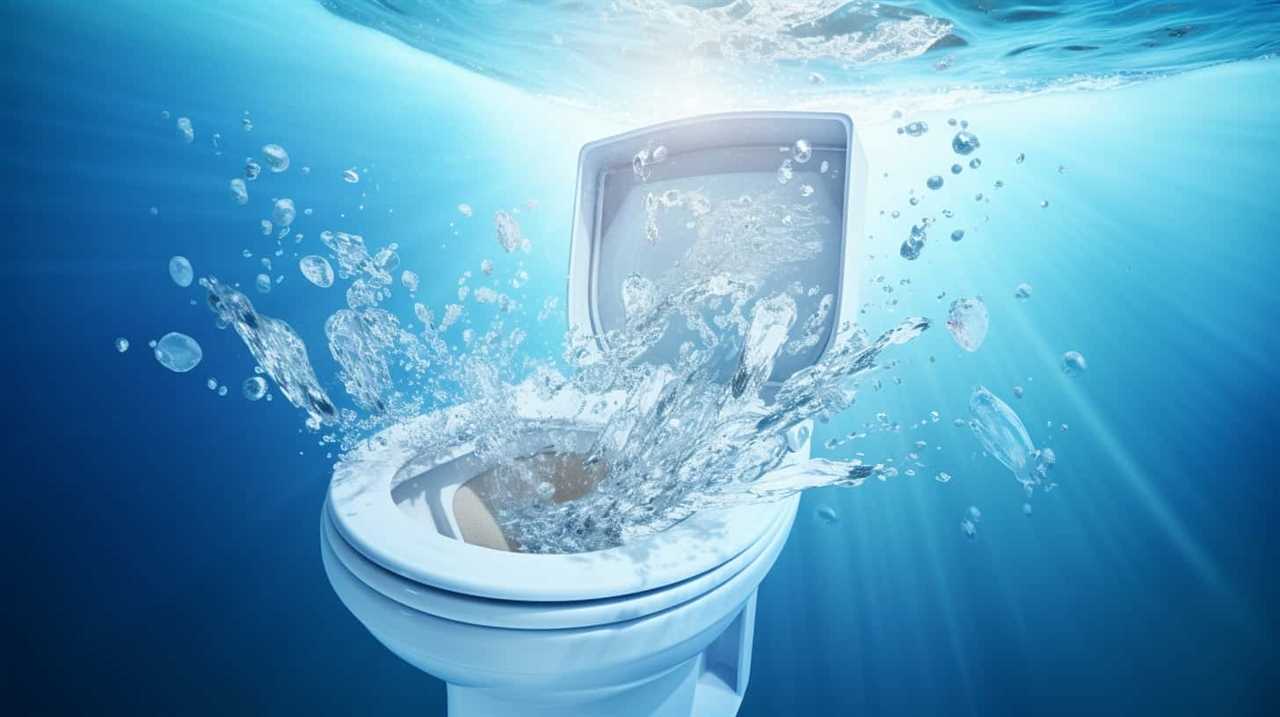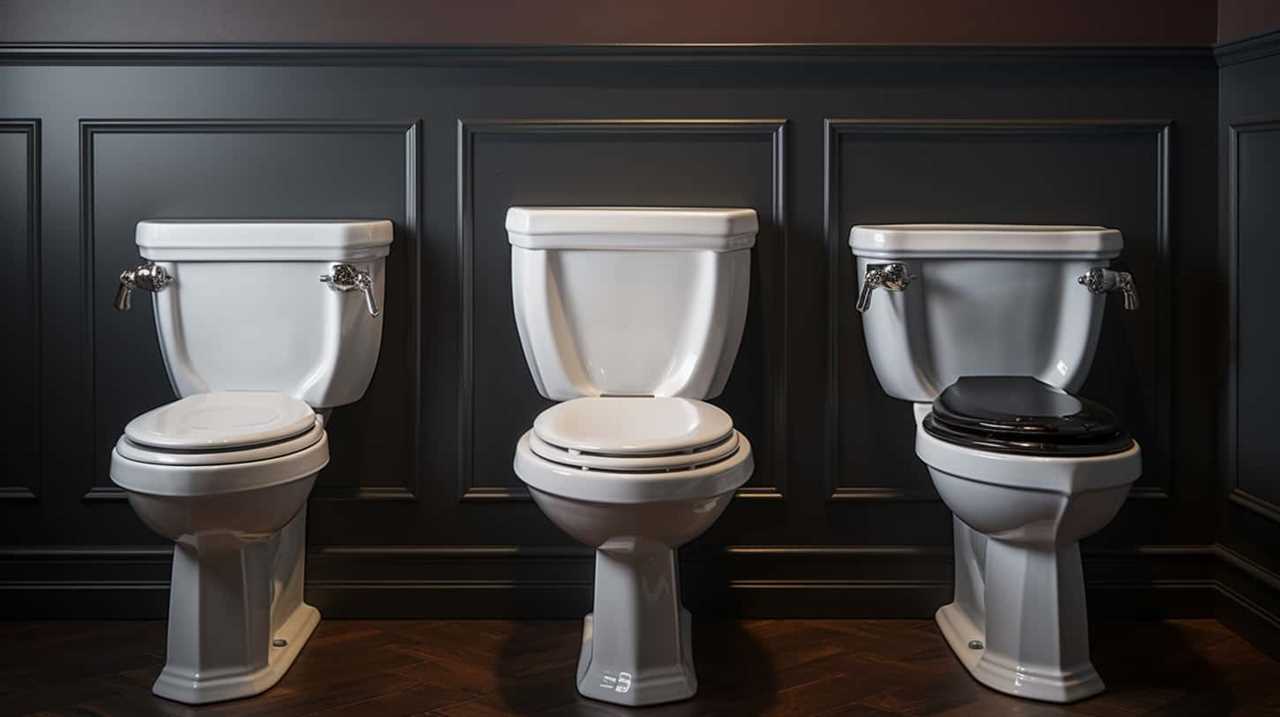Did you know that each time we flush a stool, it takes an average of 1.6 gallons of water? Understanding the amount of water used in this everyday task is crucial, as it directly impacts our water consumption and the environment.
In this article, we will explore the factors influencing water usage in flushing, discuss water-saving toilet options, and provide tips for reducing water consumption. Join us as we delve into the technicalities of this essential yet often overlooked aspect of our daily lives.
Key Takeaways
- Each flush uses an average of 1.6 gallons of water.
- Water efficient toilets use less water while maintaining performance.
- Factors such as water pressure, toilet design, and user behavior affect water usage in flushing.
- Water-saving technology, such as dual flush toilets, significantly reduce water usage compared to traditional toilets.
Average Water Consumption per Flush
On average, we use about 1.6 gallons of water per flush to effectively remove waste from the toilet. However, with the increasing focus on water conservation strategies, there’s been a shift towards more water efficient toilets.
These toilets are designed to use less water while still maintaining the same level of performance. The development of water efficient toilets has been driven by the need to reduce water consumption and conserve this valuable resource. By incorporating innovative technologies such as dual flush mechanisms and improved bowl design, these toilets can effectively remove waste using significantly less water.
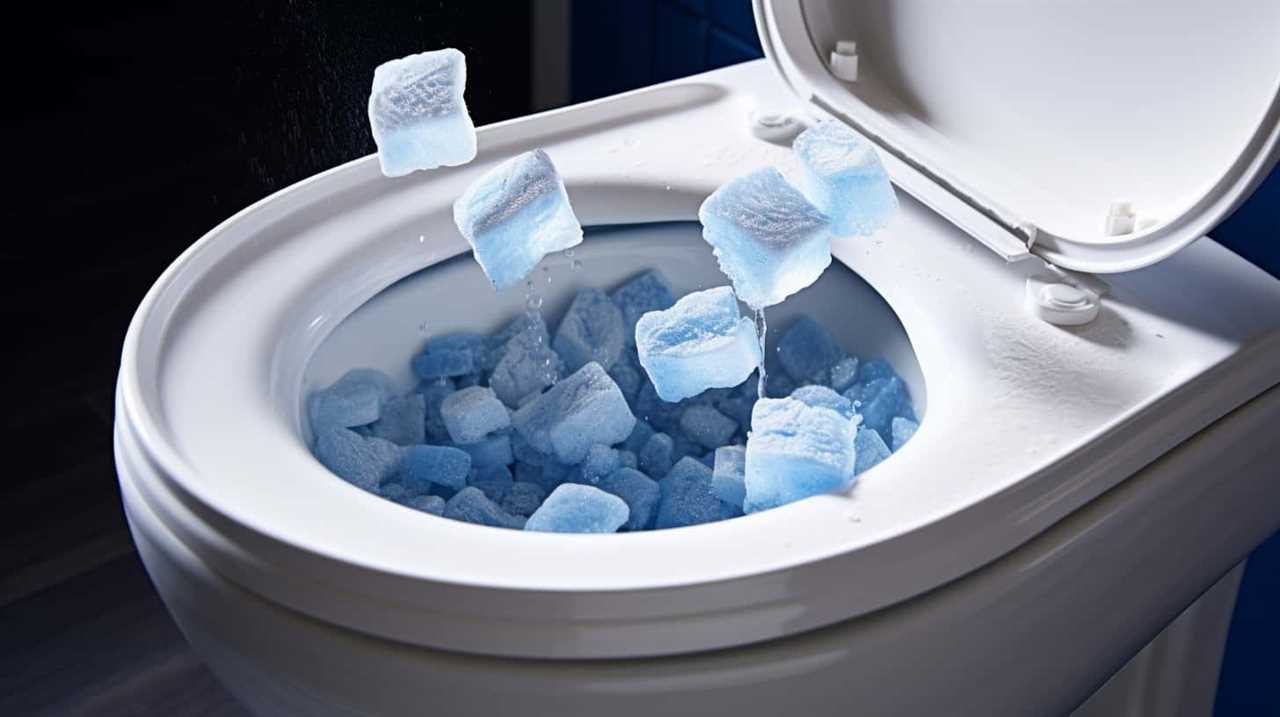
This not only helps to conserve water but also reduces the strain on water resources. Water efficient toilets are an essential component of water conservation strategies and play a crucial role in achieving sustainable water management.
Factors Affecting Water Usage in Flushing
To determine the factors affecting water usage in flushing, we need to consider various variables that contribute to the amount of water needed to effectively remove waste from a toilet. Understanding these factors can help us make more informed decisions about water conservation and efficiency.
Here are four important factors to consider:
- Water pressure: Higher water pressure can help remove waste more effectively, reducing the need for excessive water usage.
- Toilet design: The design of the toilet, including the size of the bowl and the efficiency of the flushing mechanism, can greatly impact water usage.
- User behavior: The length of time the flush handle is held down and the frequency of flushes can significantly affect water consumption.
- Water scarcity: In areas with limited water resources, it’s crucial to use water efficiently and consider alternative flushing methods.
Considering these factors, it becomes evident that water-saving toilet options are essential to reduce water usage in flushing.
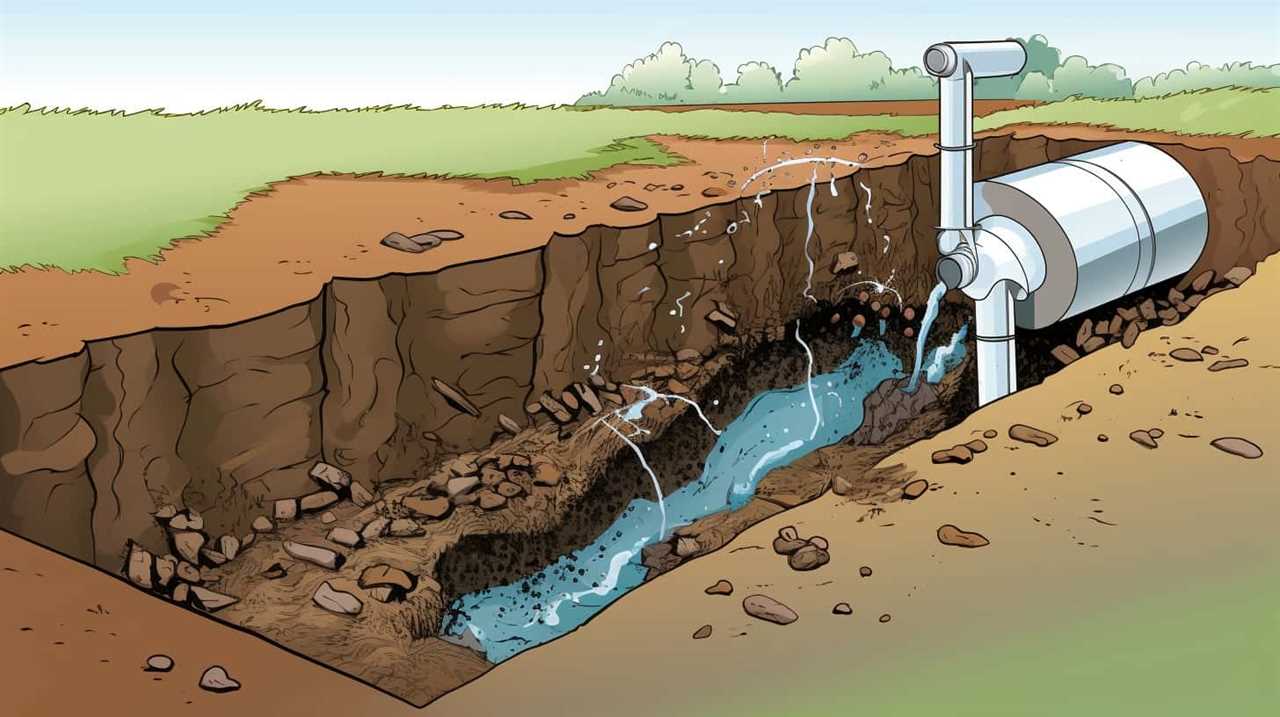
Water-Saving Toilet Options
There are several water-saving toilet options available that can help reduce the amount of water used in flushing.
One of these options is water-saving technology, which incorporates various mechanisms to minimize water consumption while maintaining flushing efficiency.
One popular type of water-saving toilet is the dual flush toilet. This innovative design allows users to choose between a lower volume flush for liquid waste and a higher volume flush for solid waste. By providing this flexibility, dual flush toilets can significantly reduce water usage compared to traditional single flush toilets.
Additionally, some dual flush toilets are equipped with advanced flushing systems that ensure effective waste removal even with reduced water flow.
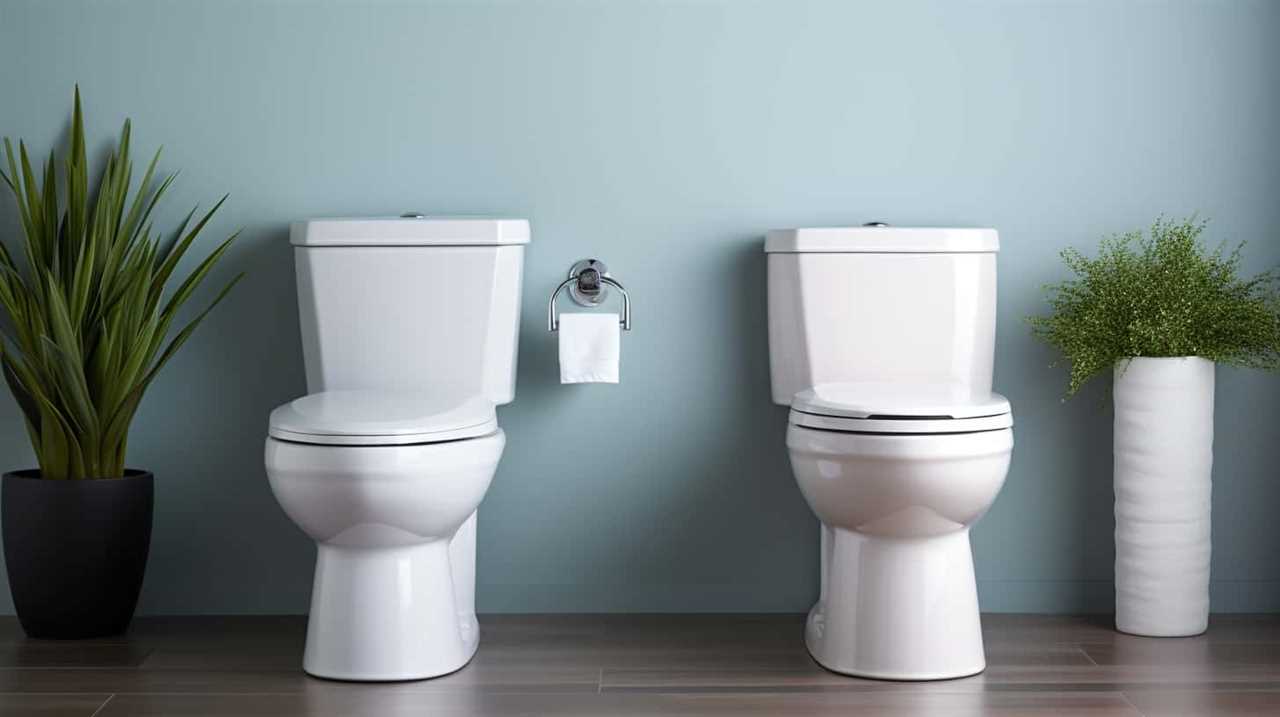
These water-saving toilet options are an excellent choice for individuals who are conscious of water conservation and want to make a positive impact on the environment.
Tips for Reducing Water Consumption
As we explore ways to reduce water consumption, one of our options is to implement water-saving toilet technology in our homes. By adopting these water-saving techniques and conservation methods, we can play a significant role in preserving our planet’s precious water resources.
Here are four effective ways to reduce water usage in our daily lives:
- Upgrade to a low-flow toilet: These toilets use less water per flush, significantly reducing water consumption.
- Install faucet aerators: These devices mix air with water, reducing the flow rate without compromising water pressure.
- Fix leaky faucets and toilets: Even small leaks can waste a significant amount of water over time.
- Collect and reuse rainwater: Utilize rain barrels or other collection systems to water plants and gardens.
Implementing these water-saving strategies can make a substantial impact on reducing our water consumption and preserving this vital resource. By taking the necessary steps to conserve water, we can transition seamlessly into the subsequent section, which explores the environmental impact of excessive water usage.
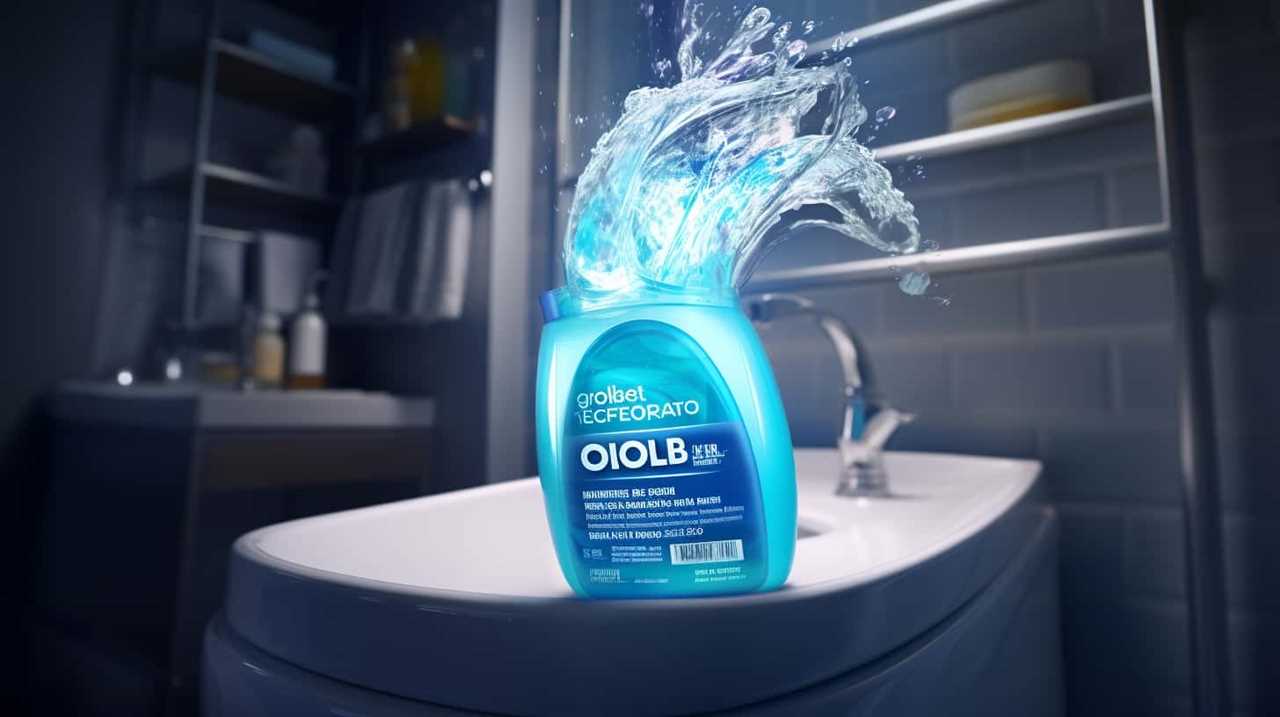
Environmental Impact of Excessive Water Usage
Our excessive water usage has a detrimental impact on the environment. It contributes to water scarcity and undermines water conservation efforts. When we use more water than necessary, we deplete our freshwater resources, which are already limited. This, in turn, affects the delicate balance of ecosystems and can lead to the loss of biodiversity.
Moreover, excessive water usage puts a strain on water treatment facilities and energy resources needed to process and distribute water. It also increases the amount of wastewater that needs to be treated and disposed of, which can further pollute our water bodies.
Therefore, it’s crucial that we prioritize water conservation by adopting sustainable practices, such as using water-efficient appliances, fixing leaks promptly, and practicing responsible water management in our daily lives.
Frequently Asked Questions
What Is the Average Cost of Water per Gallon for Flushing a Stool?
On average, the cost of water per gallon for flushing a stool is an important factor to consider when discussing water conservation. By understanding this cost, we can make informed decisions to promote efficient water usage.

Are There Any Health Risks Associated With Excessive Water Usage in Flushing?
Excessive water usage in flushing can pose health risks, such as bacterial contamination and waterborne diseases. By conserving water, we not only protect our health but also reduce the environmental impact of wastewater treatment and conserve a valuable resource.
Can Using Water-Saving Toilet Options Affect the Performance of the Flush?
Using water-saving toilet options may impact the performance of the flush. These options typically use less water, which can result in reduced flushing power. Therefore, it’s important to consider the trade-off between water conservation and flush effectiveness.
Are There Any Specific Plumbing Requirements for Installing Water-Saving Toilets?
When considering the installation of water-saving toilets, it is important to be aware of plumbing regulations and requirements. Additionally, look for toilets with water-saving certification to ensure proper performance and efficiency.
How Does Excessive Water Usage in Flushing Impact Water Availability in Drought-Prone Areas?
Excessive water usage in flushing exacerbates water scarcity in drought-prone areas. It is crucial to prioritize water conservation to ensure availability. We must understand the impact of our actions on water resources and take necessary measures to conserve them.
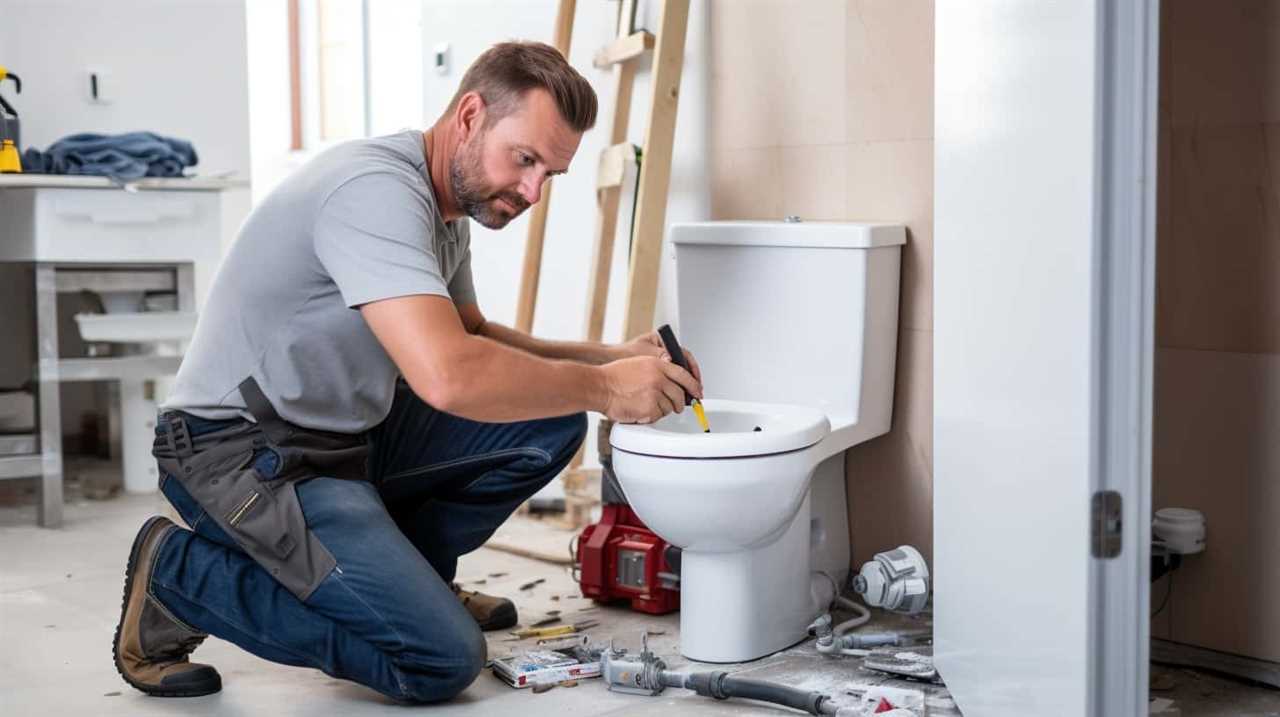
Conclusion
In conclusion, it’s mind-boggling to think about the gallons of water we waste every time we flush a stool. With water scarcity becoming an increasingly pressing issue, it’s imperative that we reassess our water consumption habits.
By opting for water-saving toilet options and implementing simple tips to reduce water usage, we can make a significant impact on the environment.
Let’s flush away our wasteful habits and conserve this precious resource for a sustainable future.



